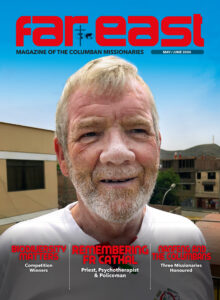Out of 3,558 Catholic churches in the Philippines, more than 800 have the Blessed Virgin Mary as their titular patron. She is a familiar face in almost every Catholic home. Her image or the rosary grace markets, buses, cars, jeepneys, boats and even motor cabs. Mary is Ang Mahal na Ina – the Beloved Mother.
“A people in love with Mary” is a phrase often quoted in reference to Filipinos’ devotion to the Mother of God. For over five centuries our love for Our Lady, whom we call ‘Ina’ (Mother), has been the force that has brought us through periods of trial, darkness and uncertainty in our country’s history and in our personal lives.
It is because of her human connection to Jesus, from the moment of his conception to his death and resurrection, that we identify with her. Our love for her is real.
How deeply Mary is part of our heritage goes back to the beginnings of Christianity in our country. Early forms of devotion were expressed through the veneration of her images that were brought by the Spanish and Portuguese explorers.
For example, the image of the Nuestra Señora de Guía in Ermita, Manila is the oldest Marian statue in the Philippines. Brought by Spanish soldiers in 1571, it was venerated for a long time by the people of a village on the shores of Manila Bay. While not knowing who Mary was, the villagers saw that the serene face created a deep calm and, as they venerated the image, they felt a deep trust and protection drawing them to her.
Many older images of the Blessed Virgin like Our Lady of La Naval de Manila (1587), Our Lady of Peace and Good Voyage in Antipolo, Our Lady of Pinafrancia in Bicol or Our Lady of the Rosary of Manaoag have been a loving presence for the people not only of the town she is associated with but for all of us Filipinos.
She is a refuge and shelter for wanderers, for those who are lost and a joy for those who are found. Even if we leave our hometowns for the city or to go abroad, when the opportunity comes, we often come back to thank and pray before the image of our Mother.
The first foreign missionaries who came to the Philippines introduced other forms of devotion to Mary, like the rosary and the Angelus. The “Flores de Mayo” allows children to shower the Queen of May not only with flowers but with love, songs and dances.
Pilgrimages to the Marian shrines, the celebration of her feast day in villages or barrios, bring people together as one family, brothers and sisters under Mary’s care. The processions of her images, especially in times of natural calamities, have helped many people to remain in the faith.
Sr Gloria Santos
First published in the May/June 2024 issue of the Far East magazine. To subscribe see: https://columbans.ie/far-east-magazine/


